#Continuous Glucose Monitoring
Explore tagged Tumblr posts
Text
Tired: I have a giant horrible bruise because my diabetes tech/CGM tried to murder me again.
Wired: I've been gored by the Continuous Glucose Minotaur
#my life#diabetes#cgm#continuous glucose monitoring#continuous glucose monitor#not trek#continuous glucose minotaur#i do not bruise easily but damn it's carnage#sorry this is off-brand but this is the only social media site that i thought would appreciate this joke
54 notes
·
View notes
Text

Something that I don't miss: fingersticks to test my glucose. Amen for CGM and results go straight to my phone and alert me if it's too low or too high
#t1d#t1diabetic#t1diabetes#glucose monitoring#fingersticks#diabetic#type 1 diabetic#insulin dependent#continuous glucose monitoring
6 notes
·
View notes
Text
Why have people historically turned to predictive behaviours and beliefs, through premonitions; and how has this evolved in the modern world? Abstract: In my essay I aim to understand why people continue to turn to predictive behaviours, either supernaturally or through modern technology, despite all of the evidence which opposes their accuracy. I look at the validity of premonition claims and see how this has evolved with our modern desire to predict and control.
Introduction: How do premonitions traditionally present? A premonition is a forewarning, or presentiment. (Allen, 1990) Premonitions traditionally present as supernatural visions of the future and have often been believed in terms of contact with a deity. In ancient Greek times for example, an oracle would be consulted for prophecies of the future, often seeking guidance in times of uncertainty. In this essay I attempt to analyse why people are drawn to premonitions of the future, and how this has developed over time.
What are they, can they be explained? I started by looking at Déjà vu and premonitions because of the link between the feeling of having already lived through a situation and the precognition of living through a situation. Also, Déjà vu is a common phenomenon, therefore it is easier to find more sound scientific data, rather than focusing on an isolated event where there is little way of discerning the truth. You can find more solid evidence for something observable, repeatable, and measurable, so there needs to be a way to reliably repeat the sensation of Déjà vu.
Methodology: For this project I used studies to back up my main theories about premonition. For example, scientific research about Deja vu and the connection to people having illusory premonition, helped me to reach a conclusion about people relying on the illusion of control to feel secure. For example, the use of unreliable law enforcement technology, creating the illusion of security. I cross-referenced this with studies about how people's desire for premonition, or interest in supernatural abilities increases during times of low control, showing that it is not facts which people are looking for, but instead the comfort that perceived knowledge would give.
Literature Review: I decided to use studies from academic journals to support my project, because they are a reliable source of information. This is because they have been peer reviewed in order to be published. However, there could be problems with funding, as this could create bias. I also used books, as they have had to go through the publishing process, and therefore have to be fact-checked. I used historical case studies from the ancient Greeks in order to show an example of a time where people have believed and relied upon premonition. This research was not intended to act as a reliable source, but instead show an example of illusory premonition, therefore the fact it is inaccurate is part of the research.
Main Findings: Dr Anne Cleary’s Déjà vu Generator: Dr Anne Cleary and her team created a virtual reality Déjà vu generator to try and find the link between precognition and Déjà vu. They spatially mapped scenes to have identical proportions, but the themes were unrelated. People were more likely to report Déjà vu in the scenes that spatially resembled earlier but forgotten scenes amongst spatially unique scenes. If a scene was similar spatially, then Déjà vu was 27% more likely, if it was similar in multiple ways, Déjà vu was 59% more likely. “We cannot consciously remember the prior scene, but our brains recognise the similarity. That information comes through the unsettling feeling that we’ve been there before, but we can’t pin down where or why.”Cleary (Cleary, 2018)
The Déjà vu generator then adapted to try and find an explanation for precognition. The same scenes were taken from the previous Déjà vu test, and converted into virtual reality tours, so that they would unfold over time like a real-life experience. So, a person would be following a virtual tour which would follow a particular navigational path through the scene, and end in a left-hand turn. Then later on in the study a person would be viewing an identically configured tour, following the same navigational path, but only up to a point, stopping just before the final left-hand turn. This was the method of putting someone in the middle of a memory to see if it would enable actual prediction, without being able to recall the previous tour. People showed no precognition ability whatsoever. However, they ran the study again and this time asked, “Do you feel like you know the direction of the next turn?”. Participants were 75% more likely to experience a feeling of precognition, and more likely to feel like they knew the direction of the next turn when they were experiencing Déjà vu then when they were not. (Cleary, 2018)
This experiment does explain Déjà vu, but does it really apply to real life premonitions? Because it does show that our past experiences will create a sense of familiarity and give someone feeling that they know what will happen next, but it doesn’t explain prewarning’s people have, namely ones which come true.
Cleary has a theory which could be used to counteract this, which is, when we are in the middle of a Déjà vu state, it feels like we are right on the verge of retrieving from our memory the entire situation around us, including how it unfolds. As the situation does unfold, and continues to feel intensely familiar, it could be taken to be a signal of having correctly predicted what was going to happen when we actually didn’t. In terms of the Déjà vu generator, when the tour went left, participants were asked if it unfolded as they had expected, and it was found that people are more likely to feel that they knew what would happen all along following Déjà vu. Another variant was run where participants were asked to rate how intense there feeling of familiarity within the scene was, and what was found was that when someone is faced with the juxtaposition of familiarity and novelty, when the familiarity is intense it can lead to an illusion of having known what would happen all along. (Cleary, 2018) (Cleary, 2018)
Analysis: Cleary’s Déjà vu generator still does not explain prewarning’s of an event. There are cases where people experience and record a premonition before it actually happens, which undermines Cleary’s explanation of illusory precognition in these instances. However, the idea of prewarning’s being due to past experiences could still be valid. This is because being subconsciously reminded, by a feeling of familiarity of an event, could be experienced as a prewarning of the event reoccurring. But in these cases, to what extent would this be common sense rather than a premonition? It makes sense for us to learn from our past experiences and to use then to avoid bad events reoccurring, does that have to be a premonition?
As well as this, premonitions regarding the Titanic could be seen through this view too, as although it had never happened before, it makes sense that some people had concerns about its safety, and this does not have to be seen in a supernatural way. (Keefe, 2021) This is relevant to premonitions because it explains how we can understand them as an illusion.
Case study: In 67 AD, Emperor Nero, who was just 30 years old and had killed his own mother in 59 AD, when visiting the Oracle was told: Your presence here outrages the god you seek. Go back, matricide! The number 73 marks the hour of your downfall! The incensed emperor had the Pythia burned alive. Nero thought he would have a long reign and die at 73. Instead, his reign came to a short end after a revolt by Galba who was 73 years of age at the time. (Parke, 2023)
Can these explanations make sense of the case studies? Yes, they can, because the premonition was already desired. The fact that the premonition was considered relevant despite the leap to connect the information, surely shows the desire for the premonitions to be true that discrepancies are overlooked, the fact the man who killed him was 73 and not Nero himself.
What has driven the need for premonitions and does this explain their prevalence? -socio-historical context: Throughout history, premonitions of the future have been believed in a supernatural sense., such as visions from God, or going to an oracle. In these times people had little control over their lives, so feelingthey had access greater power acted as a comfort. In the case of Emperor Nero and the oracle, despite the vague nature of the premonitions, people would maintain faith in them, and even adjust their interpretation of the premonition to find a meaning in it. (Parke, 2023)Oracles would be consulted in times of uncertainty, when the future was unsure, and oracles would give a sense of comfort during that time. This is consistent with Dr Cleary’s conclusion that premonition relies on illusion and people’s faith in them does not come from any real insight into the future, but on a desire to believe that they have more knowledge than they really do.
-individual context: Precognitive abilities would allow people to predict the future, thus belief in these abilities should be differently endorsed when people most desire prediction, that is in situations of low control. Therefore, belief in precognition is a predictive control strategy that people can turn to when feeling low in control. As a result, loss of control will cause an increase in belief in precognition. Loss of control has been found to increase other types of paranormal beliefs, like superstition, which also include an element of being able to predict, or at least guide the future. In the case of precognition, people have a direct and exact channel to knowing the future through psychic means. These types of beliefs should therefore be particularly attractive as predictive control strategies in so far as the give people the illusion of being able to predict and therefore control the future. (Greenaway KH, 2013)
Analysis: This study is in agreement with the conclusions which Cleary drew from her study. She also concluded that it is illusory precognition which occurs, rather than true premonition.
Are they the actualisation of a need within individuals/society? Research: People were drawn to predictability when they experienced loss of control, even to the extent of endorsing seemingly irrational beliefs about precognition. Therefore, these kinds of beliefs are a response to control deprivation, as belief in precognition increases perceived control. Predictive arts are highest in times of threat and uncertainty. It is at these moments that individuals feel the need to control the course of their lives. Belief in precognition meets this need by enabling people to feel that the future is predictable and can therefore be controlled. Regardless of whether precognitive abilities actually exist, therefore, belief in their existence serves an important psychological function of boosting perceived control in times of uncertainty.
How do premonitions present now, what might this say about us? Predictive Technology: If belief in supernatural predictive abilities increases during times of uncertainty, then it makes sense that predictive technology should also experience a surge of popularity. However, the interest in this technology is, like supernatural premonition, not reliant on the accuracy of the technology, but on the perceived sense of control and power gained by the illusion of foreknowledge. This is highlighted by the use of unreliable technologies by the United States Law Enforcement Officers. This technology analyses data to try and predict who may commit crimes and where or when they are likely to be committed. (Fraerman, 2024) The persistent use of unreliable technology shows that people are drawn to the perceived comfort that this technology brings, rather than for any practical reasons.
Research: Health monitoring as a whole has become increasingly popular, with the use of Fitbit’s and apple watches to monitor steps, sleep and even stress. (Burnham, et al., 2018) But recently there has been a trend of non-diabetics wearing continuous glucose monitoring devices. This could be used to demonstrate how people are drawn to predictive control behaviours as there are no real health benefits to wearing these devises and in fact, they can even cause harm by people becoming obsessive and even leading to eating disorders. But despite this Dr Surampudi says, “Wearing a CGM may help someone who is not diabetic make informed nutritional choices, but it also has the potential to cause users to become overwhelmed by the information”. (Surampudi, 2023)
Conclusions: In conclusion, the interest in premonition, through supernatural means or predictive technology, is driven by the comfort that perceived knowledge brings, and it is irrelevant how accurate it really is. When people turn to premonition, they are looking for illusory control in a time where they are in fact lacking in control.
Bibliography: Allen, R., 1990. The concise Oxford Dictionary of Current English. 8th Edition ed. New York: Oxford university press.
Burnham, J. P. et al., 2018. Using wearable technology to predict health outcomes: a literature review.
Journal of the American Medical Informatics Association, 25(9), p. 1221–1227.
Cleary, A., 2018. Youtube. [Online] Available at: https://www.youtube.com/watch?v=0M6qXYJkhDc [Accessed 9 July 2023].
Cleary, A. M. &. C. A. B., 2018. Déjà Vu: An Illusion of Prediction. Sage Journals , 29(4), pp. 635-644..
Fraerman, A., 2024. RELYING ON UNRELIABLE TECH: UNCHECKED POLICE USE OF ALGORITHMIC TECHNOLOGIES. Santa Clara High Technology Law Journal, 40(2).
Greenaway KH, L. W. H. M., 2013. Loss of Control Increases Belief in Precognition and Belief in Precognition Increases Control. PLoS ONE. Keefe, T., 2021. Premonition of the Titanic disaster. 1st ed. Leicestershire: Matador.
Parke, H. W., 2023. Wikipedia. [Online] Available at: https://en.wikipedia.org/wiki/List_of_oracular_statements_from_Delphi [Accessed 15 April 2024].
Surampudi, V. M. M., 2023. UCLA Health. [Online] Available at: https://www.uclahealth.org/news/continuous-glucose-monitoring-becoming-popular-among-non [Accessed 10 December 2023].
#old project#premonition#future#predictions#precognition#precognitive dreams#algorithms#continuous glucose monitoring#illusion#mind#predictive technology#fitness monitoring#oracles#oracle of delphi#knowledge#control
4 notes
·
View notes
Text
Gonna give CGMs another try on my next days off. Hopefully it works out better (it will). I also ordered stickers for them cause I'm always down for something functional & fun. I'm most excited for this one.

4 notes
·
View notes
Text
The Best Blood Glucose Monitoring Device for Home Use in India: A Comprehensive Guide
Blood glucose monitoring is a crucial aspect of diabetes management. Regular monitoring of blood glucose levels can help diabetics maintain healthy blood sugar levels, prevent complications, and live a healthy life. In India, where diabetes is a growing health concern, the availability of various blood glucose monitoring devices can be overwhelming. In this article, we will discuss the best blood…

View On WordPress
#Accu-Chek Active#blood glucose monitoring#continuous glucose monitoring#diabetes management#Health#home use#India
2 notes
·
View notes
Text

India Continuous Glucose Monitoring Market Size, Share and Forecast 2031
India continuous glucose monitoring market size was valued at USD 12.7 million in FY2023, which is expected to reach USD 39 million in FY2031, with a CAGR of 15.2% for the forecast period between FY2024 and FY2031. Numerous pivotal factors are actively transforming the landscape within India continuous glucose monitoring market. These encompass escalating incidence of diabetes, advancements in technology, heightened recognition of the significance of proactive diabetes care, shift towards patient-centered healthcare, augmented healthcare spending in India, seamless integration of CGM technology with telemedicine and digital health platforms, the burgeoning elderly population, and substantial investments within the country.
The burgeoning prevalence of diabetes is a prominent driver propelling the growth of India’s continuous glucose monitoring market. India has witnessed a substantial surge in diabetes cases, earning it the global title of “diabetes capital.” As the number of individuals grappling with diabetes continues to soar, a converted demand exists for advanced and effective monitoring solutions to manage this chronic condition proficiently. Furthermore, India continuous glucose monitoring market has been elevated to new heights through technological advancements. Continuous glucose monitoring systems have evolved significantly, enhancing precision, user convenience, and connectivity. These innovations empower individuals struggling with diabetes by providing more convenient blood glucose level monitoring and equipping healthcare professionals with the data needed to make well-informed decisions for personalized treatment plans, leading to significant growth in India continuous glucose monitoring market.
Additionally, the increase in diabetes cases, technological progress, and growing awareness of the significance of proactive diabetes management have fostered the adoption of CGM systems, speeding the growth of India continuous glucose monitoring market. Both patients and healthcare providers have come to recognize that CGM devices furnish valuable insights that can lead to improved glycemic control and a reduced risk of diabetes-related complications.
Growing Awareness About Diabetic Management Amongst Indian Population
Growing awareness surrounding the management of diabetes has significantly led to the growth of India continuous glucose monitoring market. Awareness about diabetic control is increasing in India through efforts by healthcare organizations, the government, and various awareness campaigns by medical device companies. More individuals are becoming informed about the significance of diabetes prevention, early detection, and effective management. Increased accessibility to information through traditional and digital platforms has played a crucial role in educating people about the importance of lifestyle modifications and regular screenings. As awareness spreads across the nation, individuals will be empowered to take proactive steps in controlling their blood sugar levels by adopting healthier habits and seeking timely medical intervention.
Technological Advancements are Driving the Market
Technological advancements coupled with digitization and accessibility to smartphones are driving the India continuous glucose monitoring market. With the integration of innovative sensors, wireless connectivity, and user-friendly interfaces, these devices have become more accurate, convenient, and accessible. The surge in smartphone usage and mobile applications has enabled data tracking and analysis, empowering individuals to manage their glucose levels effectively. Developing minimally invasive and pain-free monitoring methods has also increased user acceptance.
For example, in June 2023, a Bengaluru-based startup, Ultrahuman introduced the Ultrahuman Ring Air. This device is touted as the world’s lightest sleep-tracking wearable weighs in 2.4 to 3.6 grams (varies with size). Notably, it offers the capability to monitor blood sugar levels, thereby facilitating the optimization of metabolic health. Through this device, individuals can quantify their metabolic health using a metabolic score, determined by key factors such as glucose variability, average glucose score, and the time spent within the target glucose range.
Government Initiatives
Government policies in India are playing a crucial role in driving forward the India continuous glucose monitoring market. Through various healthcare reforms and initiatives, the government has underscored the significance of advanced tools for diabetes management, including CGM devices. These policies raise awareness about diabetes and its effective management and foster the research, development, and adoption of innovative healthcare technologies.
One noteworthy development in this context is the Prime Minister of India’s introduction of the National Medical Device Policy in April 2023. This policy has a primary objective of accelerating the growth of the medical device industry, with the overarching aim of bolstering India’s global presence in this sector. The policy is designed to advance medical devices across various therapeutic areas, encompassing cardiology, diabetes, medical imaging, life sciences, oncology, dialysis, and more. The diabetes medical device category includes insulin pen needles, insulin pumps, and continuous glucose monitors.
Growing Demand for Non-invasive Monitoring Methods
Growing demand for non-invasive monitoring methods is one of the causes of drastic growth in India continuous glucose monitoring market.The realm of non-invasive blood glucose monitoring stands at the forefront of healthcare technology, presenting inventive approaches to track blood sugar levels without relying on conventional needle pricking or invasive methods. Patients are getting more inclined towards opting for non-invasive methods as they are more convenient and comfortable. Through non-invasive methods, glucose levels can be monitored continuously.
For example, in January 2022, BlueSemi, an innovative health-tech company based in Hyderabad, introduced EYVA. This groundbreaking device has been designed and manufactured in India. It stands as the world’s pioneering non-invasive health-tech gadget for glucose monitoring. Offering a transformative solution in healthcare monitoring and management, this consumer health-tech device relies on pioneering patented technology that combines sensor fusion, precise AI algorithms, and smart IoT capabilities.
Rising need for real-time CGM devices
Real-time continuous glucose monitoring (CGM) devices stand as a significant breakthrough in the India continuous glucose monitoring market. These state-of-the-art technologies empower individuals with diabetes to track their blood sugar levels continually and meticulously in real-time. This capability delivers invaluable insights, facilitating improved decision-making and more adept management of the condition. These devices consist of a sensor and a reader, offering on-demand real-time glucose readings that provide a comprehensive overview of an individual’s glucose levels.
For example, in November 2020, in India, Abbott, a leading American multinational in medical devices and healthcare, unveiled the highly anticipated FreeStyle Libre system, an advanced continuous glucose monitoring (CGM) technology. The FreeStyle Libre sensor measures glucose levels every minute within interstitial fluid using a minute 5.5mm long filament discreetly inserted just beneath the skin and secured in position with a small adhesive pad.
Impact of COVID-19
The pandemic has resulted in heightened demand for glucose monitoring devices leading to drastic growth in the India continuous glucose monitoring market. As the country grappled with the unprecedented challenges presented by the virus, the healthcare landscape underwent rapid and profound transformations. Notably, the pandemic raised awareness regarding the vulnerability of individuals with diabetes. It led to disruptions in supply chains, changes in healthcare priorities, and accelerated adoption of digital technologies. Implementing lockdowns and social distancing measures underscored the importance of remote monitoring and telehealth solutions, prompting a reevaluation of traditional healthcare delivery methods. COVID-19 drove an uptick in the demand for continuous glucose monitoring (CGM) systems, despite their higher cost than traditional glucose monitoring devices. CGM systems offer real-time glucose readings, a valuable feature for individuals with diabetes who were managing their condition during the pandemic.
India Continuous Glucose Monitoring Market: Report Scope
“India Continuous Glucose Monitoring Market Assessment, Opportunities, and Forecast, FY2017-FY2031” is a comprehensive report by Markets and Data, providing in-depth analysis and assessment of the current scenario of the India continuous glucose monitoring market, industry dynamics, and challenges. The report includes market size, segmental shares, growth trends, COVID-19 impact, opportunities, and forecasts (FY2024-FY2031). Additionally, the report profiles the leading players in the industry mentioning their respective market share, business model, competitive intelligence, etc.
Click here for full report- https://www.marketsandata.com/industry-reports/india-continuous-glucose-monitoring-market
Latest reports-
Contact
Mr. Vivek Gupta 5741 Cleveland street, Suite 120, VA beach, VA, USA 23462 Tel: +1 (757) 343–3258 Email: [email protected] Website: https://www.marketsandata.com
0 notes
Text
#What is Continuous Glucose Monitoring#What is CGM#Types of Continuous Glucose Monitors#Continuous Glucose Monitoring#Continuous Glucose Monitoring for Diabetes
0 notes
Text
Continuous Glucose Monitoring Systems (CGMS) Market and Chronic Liver Disease (CLD): A Delicate Dance

Introduction:
Continuous Glucose Monitoring Systems (CGMS) Market have revolutionized diabetes management, offering real-time insights into blood sugar levels. However, for patients with both diabetes and chronic liver disease (CLD), navigating this technology presents unique challenges. This article explores the complex interplay between CGMS and CLD, highlighting considerations for optimal patient care and the evolving landscape of the CGMS market.
Download free sample: https://www.nextmsc.com/continuous-glucose-monitoring-systems-market/request-sample
Understanding CGMS and CLD
CGMS: These wearable devices continuously measure glucose levels in interstitial fluid (fluid between cells) and transmit data wirelessly to a receiver or smartphone app. CGMS provide a more comprehensive picture of blood sugar fluctuations compared to traditional finger pricking.
CLD: Chronic liver disease encompasses various conditions that damage the liver, impacting its function. Diabetes is a common comorbidity in CLD patients, further complicating blood sugar management.
Challenges of Using CGMS in CLD
While CGMS offer significant benefits for diabetes management, CLD presents unique challenges:
Glycemic variability: CLD can lead to unpredictable swings in blood sugar levels, making the interpretation of CGMS data more complex.
Hepatic glucose production: A damaged liver may struggle to regulate glucose production, further impacting blood sugar control.
Hypoglycemia unawareness: Some CLD patients experience blunted hypoglycemia symptoms, making them less aware of dangerously low blood sugar levels.
Medication interactions: Certain diabetes medications used with CLD may interact with CGMS sensor accuracy.
Optimizing CGMS Use for CLD Patients
Despite the challenges, CGMS can still be a valuable tool for CLD patients with diabetes when used with proper considerations:
Close collaboration: Effective communication between patients, diabetologists, and hepatologists is crucial to interpret CGMS data and adjust treatment plans accordingly.
Focus on trends: While rapid fluctuations might be challenging to interpret, long-term trends in CGMS data can offer valuable insights into overall glycemic control.
Prioritizing awareness: CLD patients may need to rely on additional tools like alarms or continuous glucose monitors (CGM) with vibration alerts to ensure they don't miss hypoglycemia symptoms.
Sensor placement considerations: Fluid buildup (ascites) in some CLD cases may affect sensor accuracy. Discussing optimal placement with healthcare providers is essential.
Sensor placement considerations:
Fluid buildup (ascites) in some CLD cases may affect sensor accuracy: Discussing optimal placement with healthcare providers is essential. Explore alternative sites, like the upper arm or buttocks, if the abdomen is prone to ascites accumulation.
Scar tissue: CLD can lead to scar tissue buildup, which can hinder sensor insertion and adhesion. Healthcare providers can advise on appropriate insertion techniques to minimize discomfort and ensure sensor integrity.
Skin integrity: Liver disease can sometimes cause fragile skin. Selecting appropriate adhesive dressings and rotating sensor sites regularly can help prevent skin irritation.
The Evolving CGMS Market and Addressing CLD Needs
The CGMS market constantly evolves, and some advancements offer potential benefits for CLD patients:
Sensor improvements: Newer sensors with faster response times and improved accuracy can help capture rapid blood sugar fluctuations better.
Telehealth integration: CGMS connected to telehealth platforms allow for remote monitoring and personalized guidance from healthcare providers.
AI integration: Emerging AI-powered CGMS algorithms might eventually learn to account for CLD-related factors and provide more tailored recommendations.
Inquire before buying: https://www.nextmsc.com/continuous-glucose-monitoring-systems-market/inquire-before-buying
The Road Ahead: Collaborative Efforts for Improved Care
Optimizing CGMS use for CLD patients requires a multi-pronged approach:
Further research: Studies exploring the specific impact of CLD on CGMS sensor accuracy and data interpretation are crucial.
Educational initiatives: Educating healthcare professionals and patients about the nuances of using CGMS in the context of CLD can improve care practices.
Collaboration between stakeholders: Collaboration between device manufacturers, healthcare providers, and patient advocacy groups can drive innovation and ensure CLD-specific needs are addressed in the CGMS market.
Conclusion: A More Nuanced Approach to CGMS and CLD
While CGMS offer undeniable benefits for diabetes management, their use in patients with CLD requires a more nuanced approach. By acknowledging the challenges, optimizing device use, and fostering collaboration across the healthcare spectrum, the CGMS market can evolve to better serve this complex patient population. Ultimately, the goal is to ensure that patients with both diabetes and CLD can leverage CGMS technology to achieve better blood sugar control and improve their overall health outcomes.
0 notes
Text

Continuous Glucose Monitors - Things you need to Know before use
Glucose Meters play a key role in helping diabetics keep track of their blood sugar levels (BSL). CGMs use tiny sensors inserted just under your skin to collect readings. Should you use Continuous Glucose Monitors?
Read full blog to know more: https://www.freedomfromdiabetes.org/blog/post/continuous-glucose-monitors-things-you-need-to-know-before-use-freedom-from-diabetes/1561
#continuous glucose monitoring#continuous glucose monitoring devices#continuous glucose monitoring india#continuous glucose monitoring device india
0 notes
Text
So I got a new nanny watch.
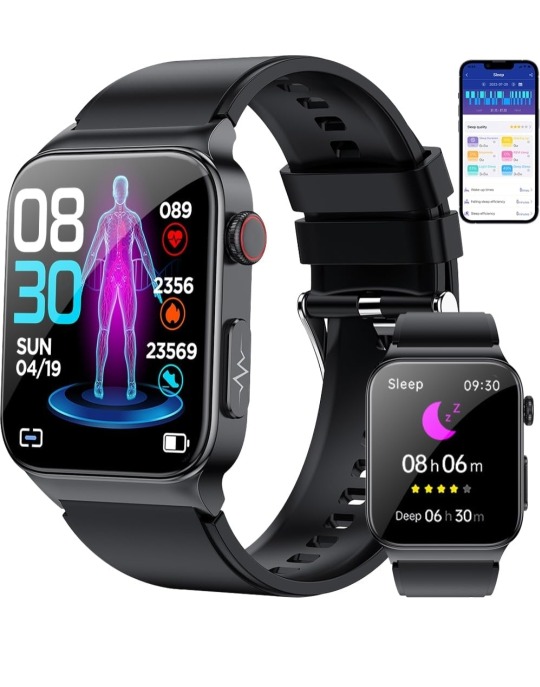
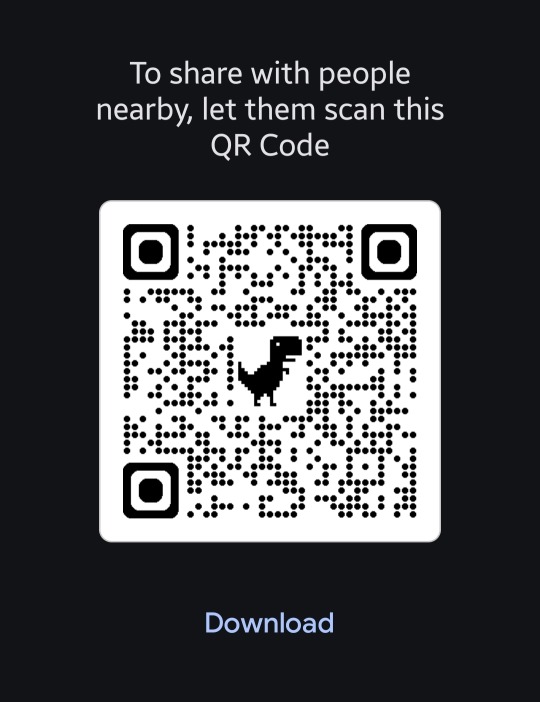
MOSOKI
Smart Watch for Men Women
https://a.co/d/dSdGNmc
For more info, see the previous post.
Part of my motivation for getting a new watch was that my old one had snapped the band. The other part, to be fair, is that I've been having a bunch of odd, non-specific symptoms. I have also asked my primary to do some bloodwork. She had no problem with any of the tests I requested. However, she had a feeling the insurance would be upset with a fishing expedition. So we broke my requests up into a couple of batches. Hopefully, as we move forward, we will have more clarification and a better idea of where to look.
For years, I have said that I have low blood sugar. I have gotten scoffs and derision from many, especially my family. My Dad's family runs to Diabetes and Pancreatic Cancer(and Heart Disease and any Cancer you can name) So me having HYPOgylcemia? F*ing Hysterical!🤣😂🤣😂
But everyone forgets my grandpop (Dad's dad) could pack away Tastykakes by the metric ton and never gain a pound. I don't know if he was ever tested. My Mom had reactive hypoglycemia. Basically, it is pre-diabetes. Your body doesn't handle sugar well. When you eat your body overreacts and sends out too much insulin. This makes your blood sugar drop too low.
True primary hypoglycemia is unusual. It is usually caused by something. It is just a matter of finding out what is causing it.
My thought is that having an idea of when(and maybe what) is triggering the lows and or highs might be helpful. Even if the numbers aren't accurate, the same should not be true for the trends.
These newer watches are very clear that these are wellness devices only. That they are not meant as substitutes for medical care.They are not approved in the US for Medical devices. They are making these overseas,(*cough* China *cough*) where there are different guidlines for these types of devices. They do have alarms for danger levels like low/high blood sugar, High pulse, irregular heart beat, hypoxia(low oxygen in the blood) and sleep apnea.
That being said, it already has been and I assume it will continue to be increasingly more so incredibly fascinating.
My blood sugar, well everything, seems to randomly jump about, up and down, at the whims of a madman. My temperature is sharing Mother Nature's menopause.(I did think that was part of my own problems but blood tests have indicated that is not the case.
Whatever is going on, it is clear that there is SOMETHING, at least. That's progress.
Ask any person who has chronic illnesses. It can be hard convincing doctors to take you seriously. I've had my share of that. Most of mine are good, but sometimes they slip. I do understand.
I get the weird shit. Do you know the saying, "if you hear hoofbeats think horses"?
Well, when a new doctor or nurse gets smarmy and says that crap? I have a pre-programmed response.
I'm a pygmy zebra running down Broadway in the middle of rush hour.
Believe it or not, that actually came from one of my doctors. I don't remember if it was my first endocrinologist or the surgical oncologist. They noted that if something happens to me, it may not be fatal, but it will be strange.
With me? It's never horses.
Hopefully, with this watch, I will be able to find the hoofprints and estimate the size of the zebra and in which direction it is heading.
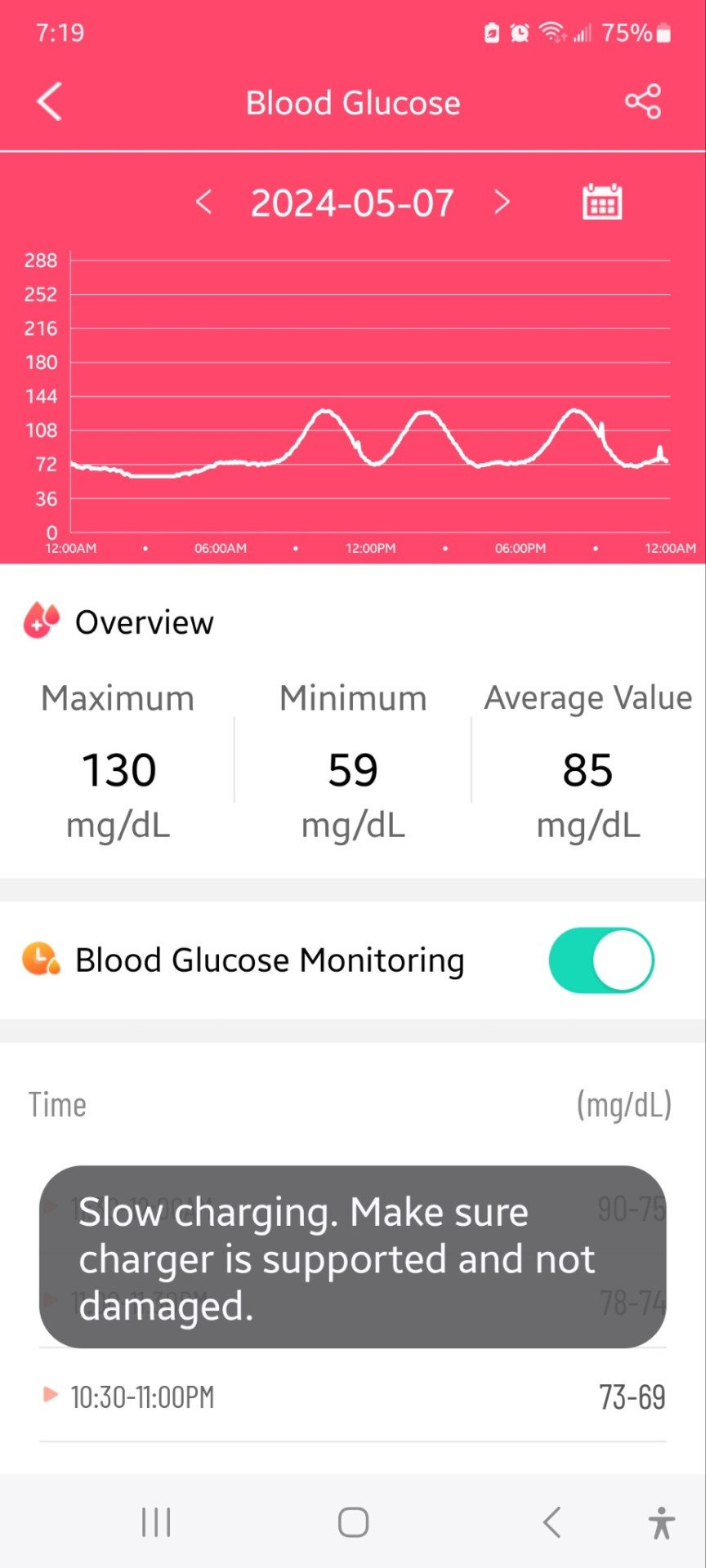
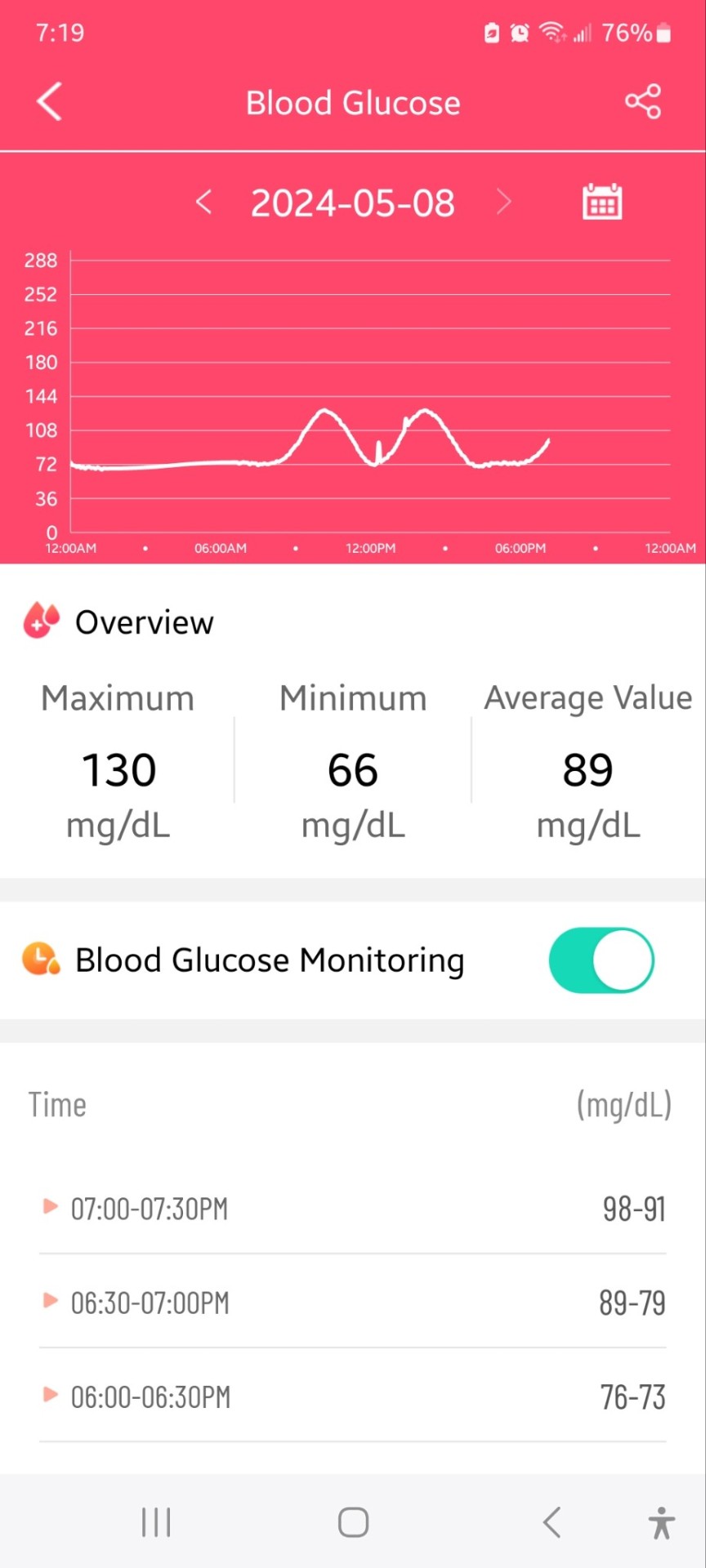
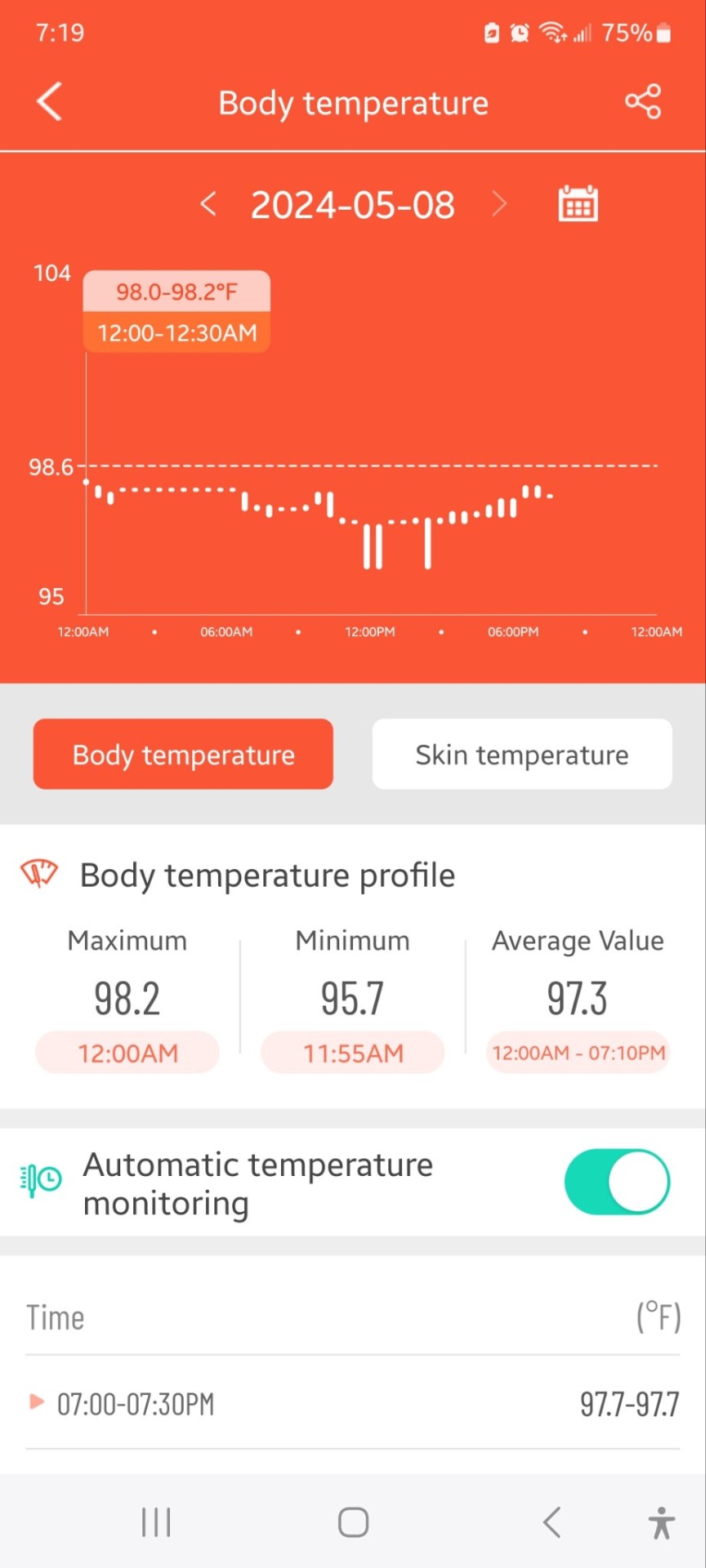
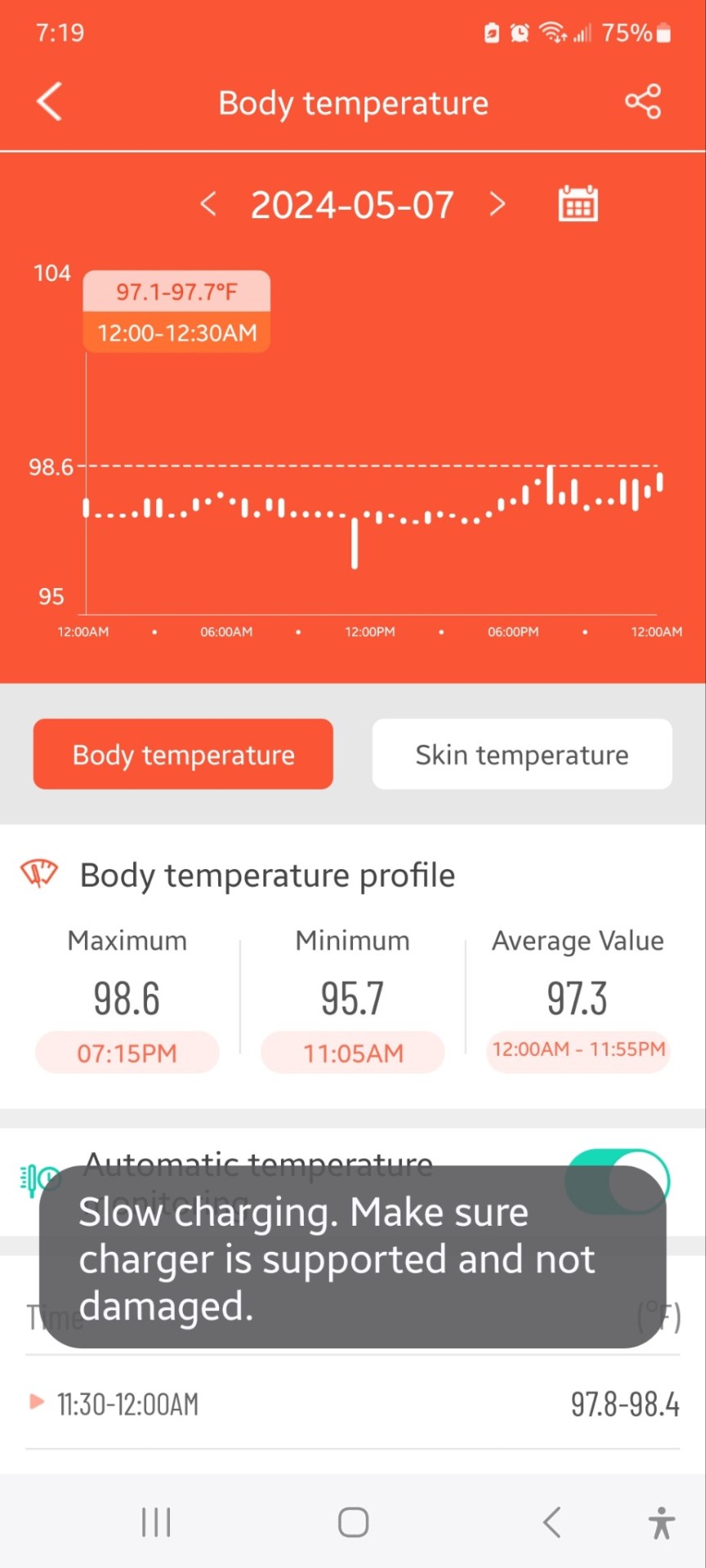

So for lows, I'm getting down to 95° core temperature and 59ml/dg blood sugar.
In the other direction, I had a temperature of 98.7° for a "record" high. and 130 for a high blood sugar.
#nanny watch#smart watch#fitness tracker#health tracker#health monitoring#continuous glucose monitoring#blood pressure monitor#Body temperature monitoring#pulse oximeter#Sleep Monitoring#Active alert monitoring
0 notes
Text
Continuous Glucose Monitoring Systems (CGMS): Revolutionizing Diabetes Management
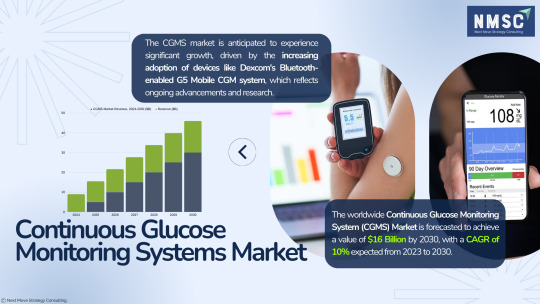
The landscape of diabetes management is witnessing a significant transformation, primarily fueled by the advent and adoption of the Continuous Glucose Monitoring Systems (CGMS) Market. These innovative devices offer real-time insights into glucose levels, empowering patients with diabetes to make more informed decisions regarding their diet, exercise, and medication.
The evolution of CGMS technology not only marks a leap towards enhanced quality of life for individuals with diabetes but also unfolds a new chapter in the cost-effectiveness and accessibility of diabetes care. This article delves into the burgeoning CGMS market, highlighting its implications for cost-effectiveness in diabetes management and examining the shifts in insurance policies and healthcare regulations that are broadening its reach.
Secure a FREE sample: https://www.nextmsc.com/continuous-glucose-monitoring-systems-market/request-sample
The Rising Tide of CGMS Adoption
The global CGMS market is on an upward trajectory, driven by a growing prevalence of diabetes, technological advancements, and an increasing awareness of the benefits of continuous glucose monitoring. These devices, which measure glucose levels at regular intervals throughout the day and night, offer a dynamic picture of blood glucose trends. Unlike traditional blood glucose meters, CGMS provide users with actionable insights to preemptively manage glucose highs and lows, potentially reducing the risk of complications associated with diabetes, such as cardiovascular disease, nerve damage, and kidney failure.
Cost-Effectiveness of CGMS: A Closer Look
The initial cost of CGMS, including the purchase of the device and ongoing expenses for disposable sensors, may seem steep compared to traditional fingerstick glucose meters. However, a deeper analysis reveals a different story when considering long-term healthcare costs associated with diabetes management. Studies have shown that CGMS can lead to a significant reduction in HbA1c levels, which correlates with a decreased risk of diabetes-related complications. By preventing these complications, CGMS can offset their upfront costs through savings on future healthcare expenditures, such as hospital admissions, treatments for complications, and reduced need for emergency care.
Moreover, CGMS can enhance the quality of life for individuals with diabetes, offering them peace of mind and reducing the burden of constant blood glucose monitoring. The ability of CGMS to provide real-time feedback and alerts can also improve glycemic control, further contributing to its cost-effectiveness.
Insurance Coverage and Healthcare Regulations: Expanding Access to CGMS
Recognizing the long-term benefits and cost savings associated with improved diabetes management, insurance providers and healthcare policymakers are increasingly supporting the adoption of CGMS. In recent years, there have been notable changes in insurance policies and healthcare regulations that are making CGMS more accessible to a broader population.
Medicare and Medicaid: In the United States, Medicare expanded its coverage for CGMS, including for individuals with Type 1 and Type 2 diabetes on intensive insulin therapy. This decision has set a precedent, encouraging other insurance providers to follow suit. Medicaid coverage for CGMS also varies by state, but there is a growing trend towards inclusion, especially for patients demonstrating a need for intensive glucose monitoring.
Private Insurance: Many private insurance companies have revised their policies to cover CGMS for a wider range of patients, including those with Type 2 diabetes not on insulin. These policy changes are often based on accumulating evidence supporting the clinical and economic benefits of CGMS.
International Perspectives: Beyond the United States, countries across Europe, Asia, and elsewhere are also expanding access to CGMS through national healthcare systems and insurance schemes. This global shift is facilitated by the recognition of CGMS as a tool for proactive diabetes management, capable of reducing long-term healthcare costs.
Regulatory Support: Healthcare regulators, such as the U.S. Food and Drug Administration (FDA), have been proactive in approving new CGMS technologies, further driving market growth. Regulatory support has also encouraged innovation, leading to the development of more accurate, user-friendly, and affordable CGMS options.
Inquire before purchasing: https://www.nextmsc.com/continuous-glucose-monitoring-systems-market/inquire-before-buying
Challenges and Future Directions
Despite the promising trajectory of the CGMS market, challenges remain, including disparities in access due to socioeconomic factors, the need for ongoing patient education and support, and the integration of CGMS data with healthcare systems for optimal diabetes management. Addressing these challenges requires a concerted effort from device manufacturers, healthcare providers, insurers, and policymakers.
As the CGMS market continues to evolve, future directions may include further technological advancements, such as non-invasive monitoring methods, integration with insulin pumps for automated insulin delivery, and enhanced data analytics for personalized diabetes management. Additionally, continued efforts to expand insurance coverage and reduce out-of-pocket costs for patients will be crucial in making CGMS accessible to all individuals with diabetes, regardless of their economic status.
Conclusion The CGMS market is at the forefront of a paradigm shift in diabetes management, offering promising prospects for improved glycemic control, enhanced quality of life, and long-term cost savings. As technology advances and healthcare systems adapt, CGMS is set to become an integral component of diabetes care. The ongoing expansion of insurance coverage and supportive healthcare regulations are pivotal in ensuring that the benefits of CGMS can be realized by a diverse population of patients with diabetes, marking a significant step forward in the quest for more effective, efficient, and equitable diabetes management.
Also Browse:
0 notes
Text
continuous glucose monitoring
continuous glucose monitoring
1 note
·
View note
Text
GS1 CGM - 24/7 Glucose Monitoring

Discover the SIBIONICS Continuous Glucose Monitoring GS1 (CGM) System. Experience real-time glucose insights for 14 days without scanning or finger-pricking. Calibration-free and waterproof for hassle-free health monitoring at home.
0 notes
Text
https://www.secondmedic.com/blogs/cgms-unveiled-how-these-smart-devices-are-revolutionizing-diabetes-care
0 notes
Text
7 Pump Patches That Will Revolutionize Your Diabetes Management: The Ultimate Guide
Discover the latest pump patches that can revolutionize your diabetes management. Say goodbye to traditional methods with these innovative solutions. Introduction to Pump Patches Diabetes management has come a long way, and pump patches are the latest innovation in this journey. These nifty devices offer a new level of control, convenience, and comfort for those grappling with diabetes. In this…

View On WordPress
#Adhesive Patches#blood glucose control#continuous glucose monitoring#Cost Considerations#Diabetes Management#FAQ#Healthcare Technology#Insulet#Insulin delivery#insulin pumps#Lifestyle Convenience#Medical advancements#Medtronic#Omnipod#Pump Patches#Tandem#Type 1 Diabetes#Type 2 Diabetes#user reviews
1 note
·
View note